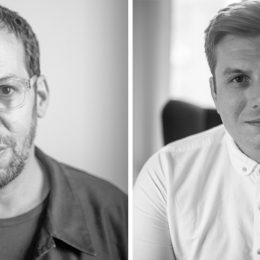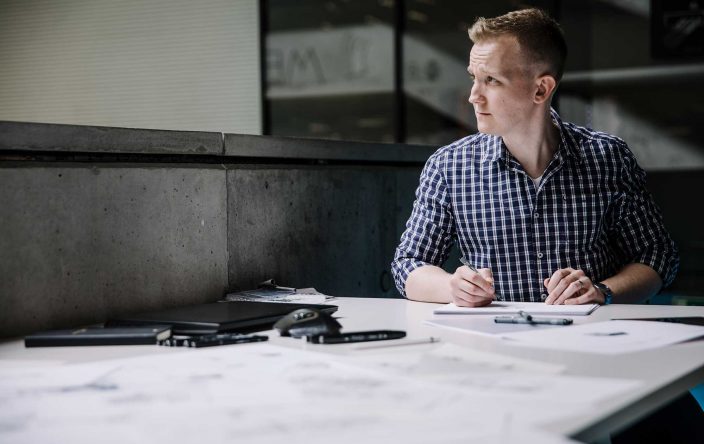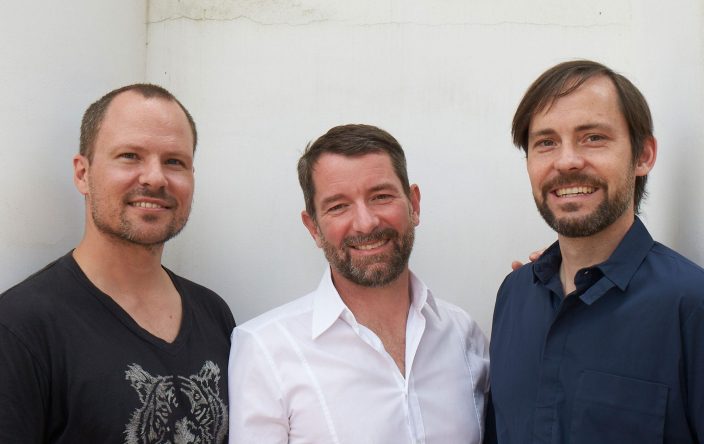
The Solidspace DNA: Roger Zogolovitch Shares His Insights on Being an Architect Developer
Do you want to get into the heads of the top initiators and performers from the architectural community? If so, we heartily welcome you to Archipreneur Insights! In this interview series, we talk to the leaders and key players who have created outstanding work and projects within the fields of architecture, building and development. Get to know how they did it and learn how you could do the same for your own business and projects.
This week’s interview is with Roger Zogolovitch, Founder of Solidspace. I met Roger at the World Architecture Festival (WAF) in Berlin where he was a judge for the completed buildings category for housing.
Roger is a practicing architect and independent developer with 40 years of experience in the field. He has built an impressive portfolio of urban housing projects on gap sites in London.
Roger implements ‘spatial DNA’ into his projects by arranging spaces for eating, living and working on a connected series of split levels. By doing so, Roger can use his architectural skills to build unique projects on otherwise difficult sites in London and also to create beautiful living environments for people.
Anyone keen to develop their own housing projects should read this; Roger gives a ton of valuable advice for getting started.
Enjoy the interview!
You have 40 years of experience in architecture and development. Could you tell us a little about how you started your career?
That’s a good question. From the beginning of my career in architecture, I never worked for another firm. I only ever worked for myself; even when I was at the Architectural Association School of Architecture (AA) as a student. At the AA we ran a little practice and did some quite innovative things in terms of shop fitting. So I’ve always been entrepreneurial.
When I finished at the AA I managed to get quite a big project going. We established the practice, which we called CZWG, Campbell Zogolovitch Wilkinson and Gough. The practice is still in operation in London and has just celebrated 40years. I was involved with that practice for its first 10 years, after which I decided to move my career from architecture – pure architecture – into architecture & development. My passion for development became a reality.
How did you develop your first project and how did you finance it?
It was always difficult. I hadn’t inherited any money. I didn’t have any when I started. But I was able to involve myself in projects. When I was starting out, I spent a lot of time trying to find sites. So my entry point was really through the land.
I was lucky enough to find a piece of land in London. It was a big, old school. I was able to get an option on it, which enabled me to secure it and get planning consent. Then I was able to sell that to another developer. And that made me a profit; at the time, I felt that I was hugely rich! I wasn’t, at least not in today’s terms, but the money was sufficient and enabled me to reinvest it and gradually use this capital to build a development business.
So you managed to secure a buyer’s option and did not have to do the financing for it?
Actually I had to sell it on before I could use the funds to finance the original project.
And did you have to get permission beforehand?
Yes, of course. The planning consent I obtained added value to the scheme. This included changing the designation of a redundant road and incorporating it into the development.
That’s really the skill of the architect; drawing out value…
We should recognize that an architect’s skill set has value. I think that one of the dangers of being an architect is that we tend to look at our projects only in terms of cost, we charge our fees based on that, we consider projects by reference to their budget cost. Developers on the contrary look at the value they create. If architects continue to only look at the costs, they will never be able to make that change to the value side for themselves.
For me, it’s absolutely essential that architects rework this mind-set because architecture does bring value. I thought it back when I started my career and I’m just as committed to that notion 40 years on.
Do you think that there’s a business knowledge gap in architecture education?
There is a huge knowledge gap. I think some architects do try to take an MBA, but property development is not quite the same because what makes them successful is understanding and managing development risks. Architects need to learn risk profiling of their projects.
As architects, we like to think that successful projects come because we have a great idea. But a project’s success is actually down to risk management by a practicing and experienced developer. Of course, they have to have a great idea as well. But successful projects from the developers standpoint are the consequence of successful risk management.
As architects, we like to think that successful projects come because we have a great idea. But a project’s success is actually down to risk management by a practicing and experienced developer.
What happens in development is that you manage risk in terms of acquiring sites, getting planning or regulatory consent, outlining an effective construction and procurement chain, and developing a strategy for marketing and sales. For a developer, it is a production process. You take on board the total cost of the project and become invested in its every aspect. You’re not just involved with the nice bits.
You’re involved with the difficulties, and problems with neighbors, land titles, drains, fire departments, contractors and delays in construction as well as in encouraging sales to take place at the time you want, getting the right price for your sales, satisfying your customers, and thinking about your customers when you’re conceiving a project to make sure it fits with their wishes.
I think that a supplementary course on these business and development topics could be very beneficial for architects because the skill that an architect brings to a project is currently a creative one. Having said that, the average architect already has the ability to view a site, come up with an idea or a vision for it, and be able to manifest it. They already have a partial understanding of the business of development. The need is therefore to add skills that they don’t already have. These skills as I have said are in the field of risk management.
What made you decide to start your firm Solidspace? Was there a particular moment that sealed the decision for you?
We’ve been in development for years but Solidspace was an idea that we had connected to the constraints of building apartments in the city. When we were looking to buy sites in the city, we tended to find small gap sites, largely leftover spaces. When you look at gap sites rather than the ‘usable’ more prominent sites on the waterfront, you may find that the views from the former are towards railways, or down alleys, or overlooked by other residual bits of the city. Some consider them the ugly ducklings of a city, but to me they’re very exciting because of their limitations. These difficult constraints make for fascinating and challenging projects.
The idea for Solidspace was to find an internal arrangement of an apartment space that entertained some sense of grandeur. Something where no matter how small the footprint was, when you came through the door you would say, “Wow, this is really beautiful.”
And that’s why I came up with this idea of working in split levels. You never have the space to do a full double level in these types of sites; a split level means you take away half the volume. It seemed to me that a split level would achieve a sensation of space and volume. That is what we’ve discovered in all the projects we’ve done. Everyone who walks into our spaces says, “This is fantastic. This is beautiful. This is spacious.” And they find it hard to believe how much floor space there actually is. For me, that is a way to turbocharge development.

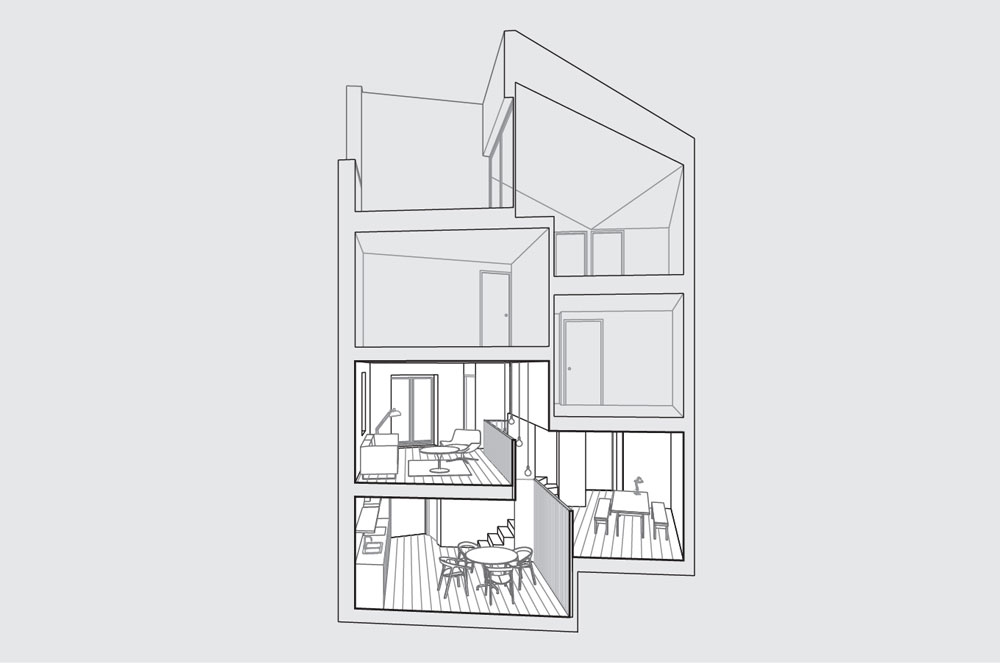
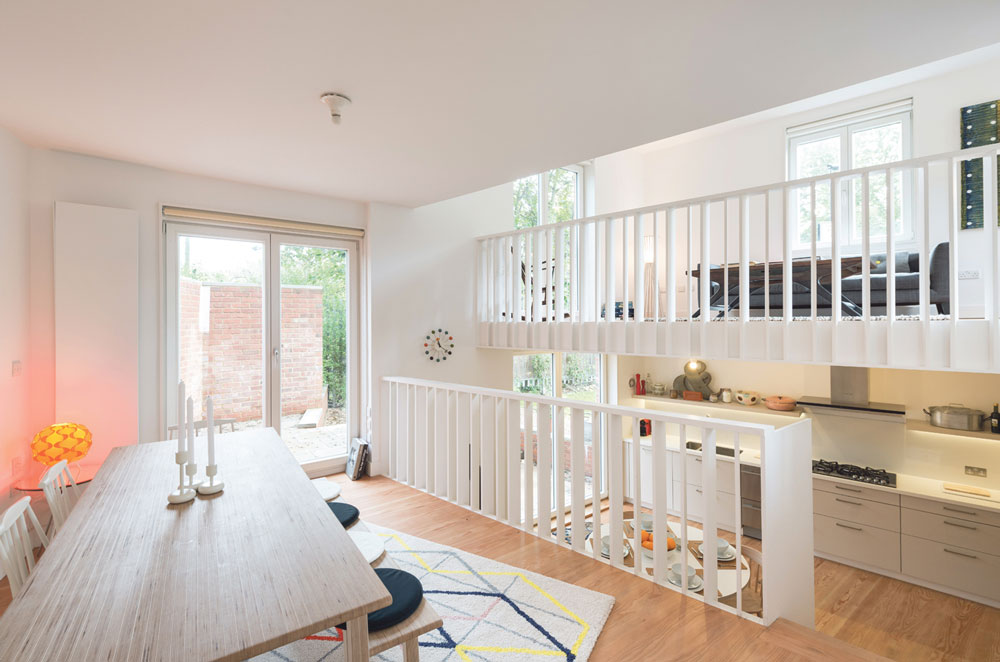

How does your company lean on a skill set that is specific to architects rather than developers? You’re certainly adding value in terms of design; that’s not what an ordinary developer can accomplish.
That’s quite a complex question because most architects and contractors work on flat or horizontal planes, whereas this Solidspace approach involves working in section putting volume inside the buildings that we’re developing. To be truthful, it has taken us a long time from the first project we undertook to persuading a conservative market of the project’s added value. But after 13 years I can happily say that we have achieved success and we are now managing to sell our products at a premium.
One chapter in your book Shouldn’t we all be developers?, is titled “Land to development is what the canvas is to the artist.” How do you conduct market research, and how do you find locations for your projects?
To me, a project doesn’t really start until we have secured a piece of land. I can obviously still do theoretical designs but the reality is that I need the site to see. For instance, I want to know that it faces north, that it has a wall of 12 meters on one side and a wall of 5 meters on the other, that the sun comes in from one corner, that there’s a window I can’t obscure, and so on. It’s out of this matrix of constraints that I build the site, which I describe as a canvas.
And do you still make the preliminary sketches yourself?
Yes, always.
Do you also assign an architect to the project?
We always work with another architect. We believe that architecture has a good collaborative tradition. But it’s difficult because in a process of collaboration you have to accept that your authorship is not going to be there. Authorship is invariably retained by the architect who executes the project.
So I think that’s quite difficult to swallow, although I think collaboration and authorship are other topics of discussion. But, yes, we make the initial concept and do the basic designs. Then we bring in an architect who works with our a very figurative brief.



What major problems and opportunities do you think cities face in the 21st century?
For me, the central problem is that the cities we face building upon in the 21st century have all been established. These are cities that have important histories, some of which are thousands of years old. In that sense, everything has already been developed. So architects need to look at redeveloping former structures.
Take for example the many redundant industrial buildings due to changes in industry and economic growth. Those present opportunities for expansion in the city. To my mind, the most challenging and exciting aspects of future development will be going back over a city and discovering it all over again.
Many commentators have said that London is an open weave city; a cloth that has lots of gaps but the gaps are difficult to bridge. When you fly over London, you see all these houses with gardens and open spaces.
One solution for housing in London is to continue densifying its grain. If you read about the history of housing in London – and the same might also be said for housing in other cities – you will see that housing was made in a very simple way by people who weren’t great architects but rather good builders and contractors. The traditional terraced house followed a very prescriptive model that suited the average family. It was layered horizontally so the lower layers or the top layers were the servants’ quarters.
I think we need the same utility in the way we make our designs today. My feeling is that our designs are far too rigorously regulated and should be more generic with a simpler approval process for the buildings we create. In London, we have a rather desperate problem regarding affordable housing. I’m not convinced that taxing developers who are housing manufacturers to provide our social housing will have any kind of benefit. It’s just a political position with a mind-set to punish developers rather than the recognition that good cities need good supply of different tenure housing.
How would you advise fresh architecture graduates to get their first project off the ground?
I’m afraid it’s all down to hard work. My career has been about development, and it has been very rewarding, both emotionally and financially. But it’s still very hard work. I work very long days. That doesn’t matter to me because I love the work so much. But don’t think this is something that will happen quickly. It won’t make you get rich quick.
You cannot be an architect without having a client, and you can’t be a developer without having a site.
You need to start off very simply: with a site. You cannot be an architect without having a client, and you can’t be a developer without having a site. Those are my two golden rules. I think the reality is that once you have a site, or control of one, then you can start to pull your development together. And then it becomes quite straightforward. You might not be able to afford it, or finance it, but those issues pale in comparison to not having a site at all.
In terms of development and starting a business, what kind of person would you advise to use entrepreneurship?
You should always use entrepreneurship in architectural practice. I remember it was once quite fashionable to talk about business plans, and improving productivity and workflows. I think you just have to tell yourself every moment of every day: what value am I adding to this project?
Architecture and development are based around projects. It doesn’t matter whether you’re designing or building them. A project has a beginning, middle and end. I think that if architects – whether or not they are also developers – can demonstrate to clients that they understand the value they’re adding, and that they want a fee based on that value, then the developer will believe that the architect is on their side. To me, that is the future of entrepreneurial activity in architecture.
How do you see the future of the architectural profession? In which areas (outside of traditional practice) can you see major opportunities for up and coming architects?
I think the architecture profession is in danger of being completely eroded. Architects don’t really understand how to talk about value. Take the WAF – World Architecture Festival where we met. Architects have no measure for value. I didn’t see a single poster that showed the intrinsic or extrinsic value of a project. I didn’t see the cost of a project being created. And so if you say that construction costs are increasing and projects are getting bigger, that means that projects will bring in more money.
The developer will aim to make between 10% and 15% of the project’s margin. If you take that margin off the gross development value and look at the cost, you can see that the developer is responsible for an enormous array of costs: land, interest, finance, professional fees and construction.
Why don’t we understand the value that we’re creating?
The architect only represents a minute percentage of that. But the architect believes that they have a much greater influence on the direction of the project. The people who do the finance don’t have an influence on the direction of the project. Neither do the people who contract that project. It’s the architect who does.
So the question I would ask is: why don’t we understand the value that we’re creating? We must begin to understand where we’re adding value and recognize that what we can bring in entrepreneurship to demonstrate how we can do that. That has the added benefit of making us more competitive against other architects.
That’s great advice. Thank you very much for the interview!
About Roger Zogolovitch
Roger is the founder and creative director of Solidspace. He is a qualified architect with 40 years experience of design and development. He is known in the industry as a progressive thinker – always striving to create projects that delight, engage and push the boundaries of how architecture can enhance our cities.
Roger was the director of the Infrastructure and Development course at the London School of Economics, and lectures regularly on regeneration policy throughout the UK. He has served as president to the Architectural Association.
He has considerable experience in the process of design management of major regeneration projects, including the Greenwich Millennium Village Competition and the Hastings & Bexhill masterplan. Roger is often asked to give his expertise as a juror, he contributes regularly to the architectural press and teaches and lectures widely.
He is author of Shouldn’t we all be developers?, a book that has sparked a debate about the role that small and independent developers should play in building the new homes that are so desperately required.
He is the Honorary Surveyor to the Royal Academy of Arts and assisting them in making their masterplan for their enlarged campus in London for their 250th year celebrations in 2018.
Join our Newsletter
Get our best content on Architecture, Creative Strategies and Business. Delivered each week for free.

JOIN THE
ARCHIPRENEUR ACADEMY
- 9 Stage Studio Growth Roadmap
- Library of In-Depth Courses
- Checklists and Workbooks
- Quick Tips and Tutorials
- A Supportive Online Community





